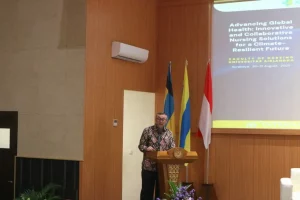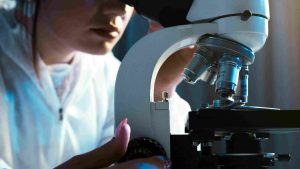Stroke is a disease that affects many people in the community. According to data from the World Stroke Organization’s (WSO) Global Stroke Fact Sheet 2022, stroke is the world’s second most prevalent cause of death and the third most common cause of disability. The estimated global cost of stroke has increased significantly, with a 70% increase in incident strokes, a 43% increase in stroke-related deaths, a 102% increase in general strokes, and a 143% increase in disability-adjusted life years (DALYs). The motor impairments that stroke patients experience as a primary contributor to death and disability also impact their quality of life. This can substantially affect a person’s quality of life, both wisely and financially. Post-stroke rehabilitation is critical in assisting stroke survivors to regain lost or compromised physical functions due to brain damage induced by the stroke. Improving motor function in stroke patients after rehabilitation might be considered a measure of rehabilitation success. Due to its characteristics as complex muscle signals, the Electromyograph (EMG) signal may be one of the markers in rehabilitation and a substitute that may be used to judge the success of rehabilitation. This EMG recording will reveal information on the nervous system’s muscle activation; the more muscles contract, the more action potentials are recorded, and the higher the EMG value. This study aims to analyze the complexity of EMG signals originating from the flexion of the flexor carpi radialis muscle with various weights indicating the rehabilitation state. It is crucial to monitor the progress of rehabilitation, which can be done using complexity analysis.
This work examines the complexity of the EMG using entropy measurement, namely Approximate Entropy (ApEn), Sample Entropy (SampEn), and Fuzzy Approximate Entropy (fApEn). We concentrated on the flexor carpi radialis muscle using flexion-extension exercises and varying the weight load. Before measuring the complexity of the EMG signals, the fApEn parameters were optimized using the simulated signals mentioned before, which already had different stated complexity based on probability. The fApEn method’s result will be relative continuity, monotonicity, and consistency. Parameters n and r in the fApEn process were optimized, which will be used later in the EMG signals. The data acquisition results from EMG signals still contain a lot of noise. The electrode’s function caused this condition as sensors of various forms of artifacts such as baseline wander, noise due to random body movements or movements of the electrodes themselves, and PLI noise. The filtering step uses a Butterworth band-stop filter to remove noise from the EMG signal.
This study’s results indicate differences in the complexity of the EMG signal in the flexor carpi radialis when performing flexion-extension movements. The heavier the weight carried, the higher the EMG signal generated and the more comprehensive the contraction range. Muscle tension data was obtained by processing the filtered EMG signal data using fApEn, ApEn, and SampEn. Three differences were correlated based on the value of ApEN, SampEn, and fApEn. Complexity Analysis using fApEn showed the best correlation at R = 0.9966, which can be used to evaluate the rehabilitation process. The increase in weight was followed by the rise of the fApEn value, indicating that the value can be used to assess the rehabilitation process. The complexity of EMG signals from the flexor carpi radialis muscle with three load conditions showed a positive linear trend. This result was in line with the other study, which also demonstrated the complexity increases when muscle contraction increases. More muscle contraction indicates more firing rates in the motor units. The result also happens if the motor units suffer from pathological conditions, such as in post-stroke patients. The fApEn value in post-stroke patients’ EMG signals was lower than in healthy subjects.
Complexity information can be used as a tool to quantify the EMG signal. Different weights were used to indicate the increasing condition of EMG signals. This condition can depict the progress in the rehabilitation process. The study of Rulaningtyas et al. also showed the same behavior as this study. They showed that the complexity of EMG signals in stroke patients was higher on the unaffected side than on the affected side. Complexity analysis of EMG signal from flexion movement in flexor carpi radialis with various weights can demonstrate rehabilitation progress.
This study has been published in Lecture Notes in Electrical Engineering, vol 1182. Springer, Singapore. Proceedings of the 4th International Conference on Electronics, Biomedical Engineering, and Health Informatics. ICEBEHI 2023.
https://link.springer.com/chapter/10.1007/978-981-97-1463-6_38
Katherine et al. (2024). Entropy-Based Analysis of Electromyography Signal Complexity During Flexion of the Flexor Carpi Radialis Muscle Under Varied Load Conditions. In: Triwiyanto, T., Rizal, A., Caesarendra, W. (eds) Proceedings of the 4th International Conference on Electronics, Biomedical Engineering, and Health Informatics. ICEBEHI 2023. Lecture Notes in Electrical Engineering, vol 1182. Springer, Singapore.
https://doi.org/10.1007/978-981-97-1463-6_38
Author: Alfian Pramudita Putra









